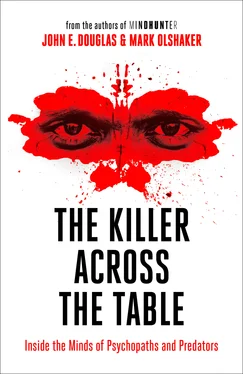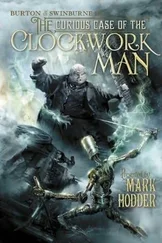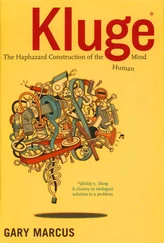That morning, I had been sworn in as a deputy by a prison official and given a photo name tag that indicated I was representing the New Jersey State Parole Board. I wore my traditional dark suit to suggest my authority.
Even for someone like me, going through the outer gate of a facility like this and passing through the series of barriers that ultimately took me to the warden’s office produces a sense of what Dante Alighieri must have been thinking when he posited the legend “Abandon all hope, ye who enter here,” over the gate of Hell.
Before I went in to speak to McGowan, I specified several parameters that I believed, based on previous experience, would be conducive to a successful interview.
I wanted the setting to be reasonably comfortable and nonthreatening. This is no easy task in a maximum security prison, where the entire environment is intimidating and designed to be so. But within that context, I wanted somewhere that the subject would be most likely to open up. I suggested a room with no more than a desk or table and two comfortable chairs. For illumination I preferred only a table lamp—no overhead lighting. This would help make the setting subdued and relaxed.
This is very important, because in a maximum security environment, the prisoner has little freedom and I want him to feel as free in his mental association as possible—in a sense, to give him some of his power back. Then you have to keep proving yourself, not only in your knowledge of the case file and the crimes, but in your nonverbal cues. When David Berkowitz was brought into the windowless interview room in New York’s Attica Correctional Facility—a room about eight by ten feet and painted a somber battleship gray—what struck me were his very blue eyes that kept darting between Bob Ressler and me as I was giving the introduction. He was trying to read our faces and gauge whether we were being sincere. I told him about the research we were conducting and that its purpose was to help law enforcement solve future cases, and possibly to help intervene with children who displayed violent tendencies.
In my research I had surmised his feelings of inadequacy. I took out a newspaper headlining his crimes and said, “David, in Wichita, Kansas, there is a killer who calls himself the BTK Strangler and he mentions you in his letters to the media and police. He wants to be powerful like you.”
Berkowitz leaned back in his chair, adjusted himself into a more comfortable position, and said, “What do you want to know?”
“Everything,” I said, and the interview proceeded from there.
In the prison in Trenton, I told the warden I wanted no time restrictions for the interview, nor any interruptions for food or a prison head count. We arranged ahead of time that McGowan would be fed when we concluded, even if he had missed an official mealtime.
The interview room was approximately fourteen feet square. The door was made of steel, with a twelve-by-eighteen-inch wire-reinforced window, through which the guards could check on us. The walls were cinder block, painted bluish gray. There was a small table and two comfortable chairs. The only light came from the table lamp I had requested.
McGowan had no idea ahead of time where he was being taken or why. He was brought into the room by two guards. Board chairman Andrew Consovoy, who had accompanied me to the prison, introduced me as Dr. John Douglas. He said I was there representing the parole board. I use the honorific Dr. only when I want to create a clinical-seeming situation. I asked the guards to remove his handcuffs, which they did before leaving the two of us alone.
McGowan and I were both in our fifties, and each about six-foot-two. I had read descriptions of him having been big but soft during his teaching days. Now his body seemed firm and muscular, after years of working out in prison. And with his gray beard, he certainly didn’t look like a young high school science teacher any longer.
Everything about these interviews was orchestrated. I wanted to face the door and have him face the wall. There were two reasons for this. I didn’t want him distracted, and since I didn’t yet know him well, I wasn’t sure how he’d react, so I wanted a clear view of the window and the guard behind it. The type of offender I interview often determines my seating decisions. When I interview assassins, for instance, I usually have to have them facing the window or door because they tend to be paranoid and will be distracted if they can’t psychologically escape when stressed by the interview.
In this situation, I took a seat and positioned myself in such a way that I would be looking up at him slightly throughout the interview. I wanted to give him that one psychological edge of feeling superior to me. This was a trick I’d learned from talking to Charles Manson when Bob Ressler and I interviewed him in San Quentin. I was surprised, at five-feet-two, how short and slight he was.
As soon as Manson entered the small conference room in the main cellblock at San Quentin where Ressler and I interviewed him, he climbed up onto the back of a chair at the head of the table so he could lord over us from a superior position, just as he used to sit on top of a boulder to preach to his “family” of followers, lending him an air of natural and biblical authority. As the interview progressed, it became clear that this short, slight man who had been the illegitimate son of a sixteen-year-old prostitute, who had been partly raised by a fanatically religious aunt and a sadistic, belittling uncle who sometimes dressed him as a girl and called him a sissy, who had been in and out of group homes and reform schools and who essentially raised himself on the street before going in and out of prison for robberies, forgeries, and pimping, had developed an uncanny charisma and ability to “sell” himself to social misfits just as lost and unwanted as he was. As someone who has stared into those penetrating eyes, I can assure you that Manson’s gift, his enticing aura, was real, as real as the delusional grandeur that accompanied it.
What we learned from our interview was that Manson was not a master criminal. He was a master manipulator, and he had developed that skill as a survival mechanism. He didn’t fantasize about torture or murder like so many of the offenders I’ve confronted. He fantasized about being rich and famous as a rock star and even managed to hang out with the Beach Boys for a while.
Like other repeat criminals we had interviewed, Manson had spent a lot of his formative years in institutional settings. He told us he had been assaulted not only by other inmates, but also by counselors and guards. This had the effect of teaching him that weaker or more impressionable people were there to be used.
By the time he was released from prison in 1967, he had spent more than half of his thirty-two years in some sort of institution or custody. He made his way north to San Francisco and discovered things had changed in society. He could use his wits to participate in the culture of sex, drugs, and rock and roll, and get it all for free. His musical talent and melodic voice served him well in attracting followers. It was only a matter of time before he drifted down to the Los Angeles area and developed an “audience.”
In listening to him, we realized that the horrific murders carried out in Los Angeles by his followers occurred not because Manson exerted such hypnotic control—which he did—but when he started losing control and others, particularly his lieutenant Charles “Tex” Watson, started challenging him and leading the group on adventures on his own. Manson had been predicting societal “Helter Skelter,” which he picked up from the Beatles’ White Album, and when he realized his acolytes had taken him seriously and murdered beautiful, nine-months-pregnant movie star Sharon Tate and four of her guests, he had to reassert himself, leading to another break-in and murder two nights later that Manson instigated but did not take part in himself.
Читать дальше












